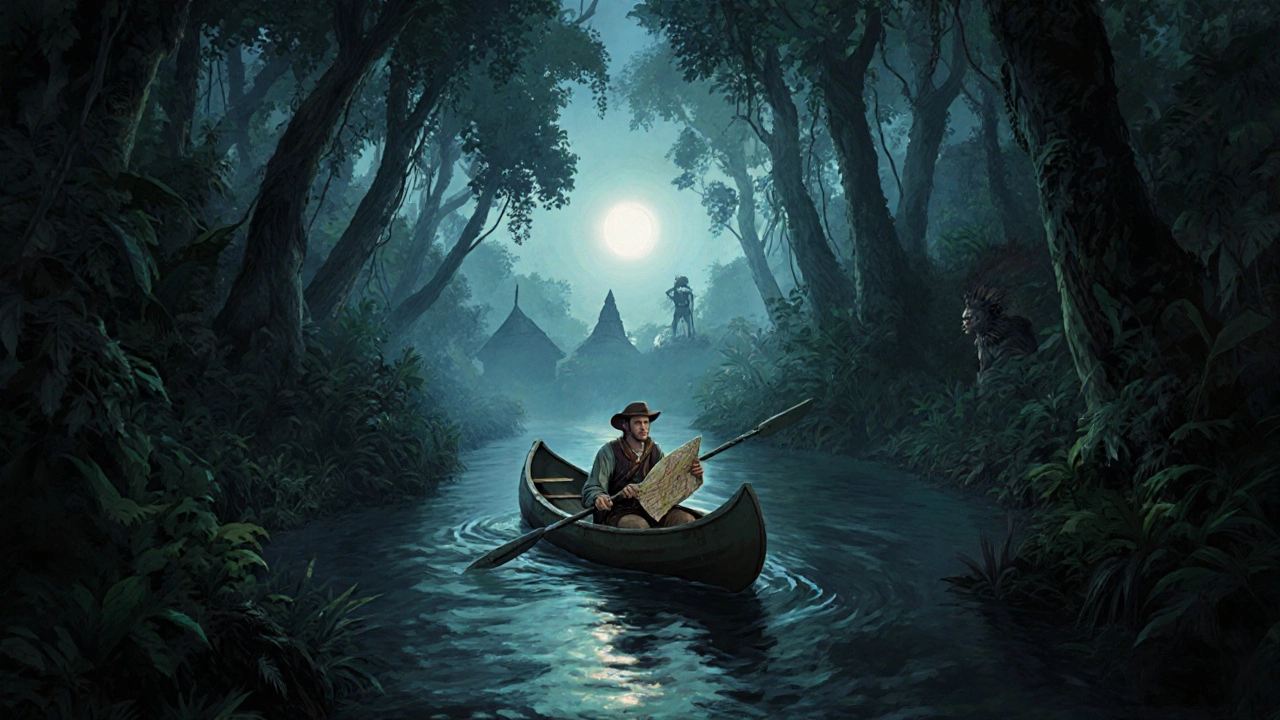What Makes a True Adventure Story? Definition, Core Elements & Real‑World Examples
 Oct, 20 2025
Oct, 20 2025
Adventure Story Checker
Check Your Story for Adventure Elements
Does your story contain all core elements of a true adventure story? Check the boxes below based on the article's criteria.
Results will appear here after checking your story
Key Takeaways
- A true adventure story thrusts characters into unknown, high‑stakes situations that test their limits.
- Core elements include a clear quest, a compelling hero, vivid setting, and escalating danger.
- The narrative arc often mirrors the classic "hero's journey" but can bend the pattern for modern twists.
- Examples range from 19th‑century classics like Heart of Darkness to contemporary thrillers such as Wild by Cheryl Strayed.
- When you spot these ingredients, you can spot a genuine adventure story, regardless of the medium.
Defining a True Adventure Story
When we talk about a adventure story is a literary genre that places characters in risky, exotic, or unknown situations, driving the plot through physical action and discovery, we’re looking for more than just a burst of excitement. A true adventure story is anchored by three pillars: a compelling quest, an active protagonist, and an environment that amplifies risk.
Unlike a simple action piece that might focus solely on fight scenes, an adventure story asks "why" the characters are out there. It probes purpose, asks them to confront both external obstacles and internal doubts, and rewards the reader with transformation.
Core Elements That Signal Authentic Adventure
The Quest - Driving the Plot Forward
The quest is the story’s engine. It can be a physical goal-searching for treasure, crossing a desert, or sailing to a mysterious island-or a more abstract aim, like finding inner truth. The key is that the goal is clear, high‑stakes, and forces the protagonist out of their comfort zone.
The Hero - Active, Not Passive
A hero in an adventure narrative is defined by agency. They make choices, react to danger, and often evolve through the journey. Think of Huckleberry Finn’s daring river escapade or Lara Croft’s relentless tomb raids. Both characters drive the story rather than being carried along.
Setting - A Character in Its Own Right
Location isn’t just backdrop; it acts as an antagonist or ally. Whether it’s the unforgiving Antarctic ice in Endurance or the dense Amazonian jungle in *The Lost City of Z*, a vivid setting magnifies the stakes and shapes the narrative rhythm.
Conflict and Danger - Raising the Stakes
Every genuine adventure story escalates danger. It might be a fierce storm, a hostile tribe, or an internal moral dilemma. The conflict should feel inevitable given the quest and setting, making the hero’s progress feel earned.
Narrative Arc - The Hero’s Journey Blueprint
While not every adventure adheres strictly to Joseph Campbell’s monomyth, the pattern of "call to adventure → crossing the threshold → trials → reward → return" offers a useful scaffold. Modern writers often flip or subvert stages, but the sense of progression remains essential.
Classic vs. Modern Adventure: How the Genre Evolved
| Aspect | Classic (19th-early 20th c.) | Modern (Late 20th-21st c.) |
|---|---|---|
| Protagonist | Often male, aristocratic or explorer‑type | Diverse gender, background, and often flawed |
| Setting | Exotic colonial locales, uncharted seas | Urban wilderness, post‑apocalyptic, virtual worlds |
| Goal | Treasure, conquest, scientific discovery | Self‑discovery, environmental activism, personal healing |
| Conflict | Man vs. nature, rival explorers | Man vs. self, systemic issues, technology |
| Resolution | Triumphal return or tragic loss | Open‑ended growth, ambiguous outcomes |
Notice how the skeleton stays the same-quest, hero, peril-but the flavor shifts with cultural attitudes. Modern adventure often weaves in social commentary and psychological depth, while classic versions relied more on spectacle and moral clarity.

Real‑World Examples That Nail the Formula
Below are five books (and their film adaptations where relevant) that exemplify the core ingredients of a true adventure story.
- Heart of Darkness by Joseph Conrad - A river voyage into Congo’s interior that tests the narrator’s morality as much as his stamina.
- The Call of the Wild by Jack London - A dog’s trek through the Yukon Gold Rush, showcasing survival against brutal climate and human greed.
- Wild by Cheryl Strayed - A solo hike along the Pacific Crest Trail that blends physical hardship with emotional healing.
- Into the Wild by Jon Krakauer - Chronicles Christopher McCandless’s reckless trek into Alaska, highlighting the thin line between idealism and folly.
- Jurassic Park by Michael Crichton - DNA‑revived dinosaurs create a theme‑park nightmare; the quest to survive becomes a fight against humanity’s hubris.
Each work features a distinct quest, a protagonist forced to act, a setting that intensifies danger, and a narrative arc that rewards (or punishes) the hero’s choices.
How to Spot a True Adventure Story in Your Reading List
- Identify the quest: Is there a clear objective that propels the plot?
- Check the hero’s agency: Does the protagonist make decisive moves, or are they merely reacting?
- Assess the setting: Does the environment add unique challenges?
- Gauge the stakes: Are dangers tangible and escalating?
- Look for transformation: Does the journey change the hero in a meaningful way?
If you can answer “yes” to most of these, you’ve likely got a genuine adventure story on your hands.
Common Pitfalls and How to Avoid Them
Writers often mistake high‑octane action for true adventure. Here are three traps and quick fixes:
- Over‑reliance on spectacle. A single breathtaking chase won’t carry the story. Balance spectacle with internal conflict.
- Flat hero. If the protagonist never doubts or grows, the journey feels shallow. Introduce moments of self‑questioning.
- Setting as backdrop. An unused setting wastes narrative potential. Let geography dictate obstacles.

Writing Your Own Adventure Story: A Mini‑Guide
Ready to craft a tale that feels authentic? Follow these three steps, each rooted in the elements above.
- Map the quest. Write a one‑sentence logline that states the goal and why it matters.
- Design a hostile setting. List three environmental hazards that will test your hero.
- Chart the arc. Sketch the hero’s start, three major trials, and the final transformation.
When you align each part with the core elements, the story will read like a true adventure, not just a series of set‑pieces.
Frequently Asked Questions
Is a thriller the same as an adventure story?
Not exactly. A thriller focuses on suspense and psychological tension, often staying in familiar settings. An adventure story emphasizes physical journeys, exotic locales, and the protagonist’s active quest.
Can a short story be a true adventure?
Yes. Length isn’t the defining factor; the presence of a clear quest, an active hero, and escalating danger can be compressed into a short format.
Do adventure stories always have happy endings?
No. While classic adventure tales often celebrate triumph, modern works accept tragic or ambiguous endings to reflect realistic consequences of risk.
How does the hero’s journey relate to adventure fiction?
The hero’s journey provides a structural template-call to adventure, trials, reward, return-that many adventure novels follow, though authors often insert twists or skip stages.
What genres overlap with adventure stories?
Adventure frequently blends with historical fiction, fantasy, sci‑fi, and even memoir. The shared element is the protagonist’s risky quest.
Next Steps for Readers
If you’re a reader, pick one book from the list above and map its quest, hero, and setting using the checklist. If you’re a writer, draft a one‑paragraph logline that hits the three core pillars, then expand.
Either way, you’ll soon be able to separate true adventure stories from mere action flicks and enjoy the genre with a sharper eye.